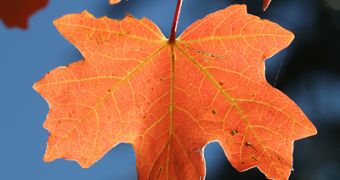In a previous article, I was telling you about the basic categories of colors ? primary, secondary and neutrals ? and about the fact that the staple pieces in our wardrobe need to be chosen among the neutrals, and then brought into sharper focus by various combinations with more colorful shades. Now it's time to talk more about the types of color combinations we can make.
There are two basic types of color combinations: monochromatic and analogous ones. A monochromatic color scheme is made up of darker and lighter shades of the same hue. Such an outfit ? made up, for example, of a dark blue skirt, light blue top and medium blue shoes ? is a subtle choice, perfect for work, since the lack of contrast between colors achieves a muted, subtle effect.
Analogous color schemes are made up of colors that are adjacent to one another on the color wheel. They make for bolder combinations ? blues and greens are an example ? however, there is still little contrast between the various shades, so the combinations are still very harmonious and not too bright to risk being over the top.
Complementary color combinations are the most interesting ones ? and the boldest ones yet. However, it's important first of all to understand exactly what complementary colors are ? hues which are situated opposite each other on the color wheel, which means that they contrast, enhance and intensify one another. The complementary color of a primary color is the color you get by mixing the other two primary colors:
Blue's complementary color = red + yellow = orange Red's complementary color = blue + yellow = green Yellow's complementary color = blue + red = purple
Each pair of complementary colors contains one warm and one cool color. Some of the most popular warm colors are magenta, red, orange, yellow and greenish-yellow. These colors are bold, bright and give off a sense of energy and excitement. Cool colors on the other hand tend to make us feel more relaxed and evoke such emotions as peace, serenity but also sadness, depression and isolation. The most common cool colors are purple, blue, turquoise and green.
One important thing to remember is that when worn together, complementary colors make each other look brighter. If you're aiming for a reserved, more discreet look, you should definitely not mix blue and orange, for example. Complementary color combinations are eye-catching and trendy, but can very easily fall into the other extreme and appear too powerful and tiresome. The ever-trendy outfits are those built on neutral anchors with subtle combinations of monochromatic and analogous shades.

 14 DAY TRIAL //
14 DAY TRIAL //